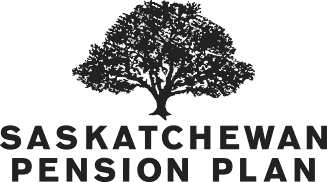Oaken Financial
How you can set up a “Pay Yourself First” plan
September 9, 2021
By now, practically all of us have heard about “pay yourself first” as a savings strategy.
The general idea is to put away some percentage of your earnings, and then live on the rest. It sounds simple in theory, but in practice, less so. To that end, Save with SPP took a look around the Interweb to get some ideas about how to actually get going on a “pay yourself first” plan.
The folks at MoneySense see several simple steps you need to take to put your plan into action.
First, they suggest, “zero in on your savings goals.” What are you paying yourself first for – to build an emergency fund, or save up for a down payment, or a wedding or (our favourite) retirement, the article asks.
There has to be a reason why you are directing money away from your normal, bill-paying chequing account, MoneySense tells us.
Next, they recommend, take pen to paper and figure out how much you actually can pay yourself first. Make a list of your monthly “must spends,” like “shelter, food, electricity/heat, phone, transportation, etc.,” the article says. What’s left over is “discretionary” money, which can be spent or saved, the article adds.
If you are saving for more than one thing, you need to figure out how much each month to put away for each category. Then comes the actual “doing” part – automating your savings plan.
MoneySense recommends setting up an automatic transfer each month that moves money from chequing into savings. This amount can be increased when you get a raise, the article notes. Savings should be directed to either a tax-free savings account (TFSA), a registered retirement savings plan (RRSP), or a combination of both, the article concludes.
The Oaken Financial blog notes that guaranteed investment certificates (GICs) can be a good place to stash savings. GICs are locked in for a time, but pay a set amount of interest for a fixed term, the blog notes. High-interest savings accounts pay good interest but allow you to make withdrawals at any time, the blog notes.
The Golden Girl Finance blog says there are apps that take the difficult thinking part out of the saving equation. Wealthsimple, the blog notes, allows you to round up your credit card purchases, so you are actually paying a little extra, with that money being directed to your savings account. So you save a little as you spend, the blog notes.
Save with SPP notes that similar arrangements – where you pay a little extra on debit card purchases, or where a money-back credit card deposits the cashback directly to your savings account – exist at other Canadian banks.
Other ideas that have flashed across the screen of late:
- Banking your raise. You were paying off the bills OK before you got the raise, so why not stick the difference between your former pay and your new pay into savings, and live off the rest? You were the day before the raise!
- Banking your cost of living adjustment. Same concept, but for us lucky pensioners who get cost of living increases, why not direct the increase to savings and continue to live on what you were getting prior to the increase?
- Starting small. You may not stick with a pay yourself first plan if it is overly ambitious. Uncle Joe always said bank 10 per cent and live on the 90 per cent; he did, and he did well, but Joe was a very disciplined spender. Better to start smaller, maybe two or three per cent, and phase it up.
So to recap – you either need to know how much you spend each month to figure out how much you save, or you need to just pick an affordable percentage of your earnings and set it aside. Once you have automated the process, you won’t miss the saved amount, which will grow happily in a savings account, a retirement account, or perhaps the Saskatchewan Pension Plan.
Celebrating 35 years of operations, the SPP permits automatic contributions. They can set it up for you, or you can set up SPP as a bill on your bank website and set up the automation yourself. Either way, the money you direct to SPP will be put away for your future, invested professionally, and – grown – will await you after you get home from the retirement party!
Join the Wealthcare Revolution – follow SPP on Facebook!
Written by Martin Biefer

Martin Biefer is Senior Pension Writer at Avery & Kerr Communications in Nepean, Ontario. A veteran reporter, editor and pension communicator, he’s now a freelancer. Interests include golf, line dancing and classic rock, and playing guitar. Got a story idea? Let Martin know via LinkedIn.
